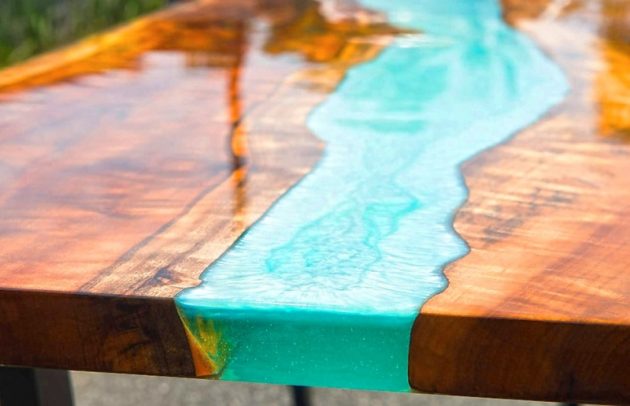Epoxy resins are made up of two parts: resin and hardener. When the two ingredients are combined, a chemical reaction occurs, resulting in the generation of heat. As a result of the heat, the epoxy transforms from a liquid to a solid.
Epoxy resin is blended in a specified ratio or amount of resin to hardener, much as other resins. The resin has a pot time (a period of time while it is still liquid enough to work with) and a curing time (the amount of time needed for the epoxy to completely harden). Every epoxy resin is unique! The resin must be fully blended in the exact quantities for optimal curing. Let us help you out in this resin flower preservation guide.
Epoxy, a kind of resin, is best known for being a long-lasting adhesive with excellent bonding capabilities. It is usually offered in two parts: part a (resin) and part b (hardener), which must be blended in exact proportions shortly before use to achieve a certain strength. They may bind a variety of materials, including metals, polymers, and even wood. Epoxies can be used not only as a powerful bonding agent, but also as a hard layer of protection.
Other uses for epoxy in home items include repairing ancient picture frames, any components that have come loose from a gadget, and even damaged clocks. Clear epoxy resin may be a good option for any other type of glue you might be using to repair home items since it can make much stronger bonding.
Epoxy offered for residential use differs from epoxy marketed for industrial usage in terms of formulation. They vary in strength because industrial components would very certainly require a considerably stronger solution to hold them together. The epoxy for domestic usage, on the other hand, has a powerful composition for holding things together.

When dealing with epoxy resin, what safety measures should I take?
Follow the directions and safety precautions provided by the manufacturer.
- Work in a well-ventilated and clean environment.
- Consider donning a respirator, rubber gloves, and eye protection depending on the materials you’ll be working with.
- Clean up according to the manufacturer’s instructions. All waste products must be disposed of in line with local rules.
What should I do to be ready for working with epoxy resin in my crafting area?
- Wax paper should be used to cover the work area. Wax paper will not attach to the resin.
- Prepare a flat, non-disturbable surface for goods to dry on. (And, speaking from personal experience, be careful of cat hair!!!)
- Make sure you have the right type of boxes so that you can enjoy preserving your flowers in the best manner. This will also help you enjoy a longer life of your product.
What if I want to add objects to my resin?
Seal all sides and borders of the picture to avoid yellowing and water stains. If the image is printed on an ink-jet printer, this is extremely significant. Allow the paper and sealant to thoroughly dry before applying the resin on the pictures.
What about using resin to encase other objects?
- Flowers and other plants must be dried before being used.
- To avoid discoloration, spray dried flowers, candy sprinkles, and other items with a spray sealer.
- If you’re using resin dyes or pigment, start with a little quantity. A little goes a long way in most cases.
Do you have any advice for pouring resin?
- Apply a small amount of resin at a time. It can pour swiftly depending on the resin. It’s simpler to pour from a smaller cup since it’s easier to regulate.
- You may next check if your resin is cured by looking at it in the cup. You won’t have to disrupt your project to check on how it’s progressing.
- When it comes to eliminating bubbles from resin, a heat gun comes in handy.
Epoxy is an excellent thermosetting epoxide polymer for use with metals that are subjected to a lot of stress because of its hard covering and strong bonding properties. Airplane hulls and ship metal plating are two examples of such uses. Epoxy’s flexibility allows it to be employed in the production of wooden furniture as well. When epoxy is used to varnish the completed product, it can be utilised to fix pieces of frames and even function as a layer of protection. Epoxy varnishing provides the goods a beautiful finish that will last for years.
All resins are made up of two parts: the basic resin and the hardener. When they’re combined, they undergo a chemical process that causes them to cure and solidify. The drying period, as well as the amount of time you have to work with it and the viscosity, might range from 12 to 48 hours.
Conclusion
The importance of the mixing ratio and equal mixing of the two elements when employing resin cannot be overstated. If you use too much of one element and not enough of the other, the casting will either be brittle or will not fully set and will stay sticky. The mixing of the two portions is aided by pouring the mixture from one container into another.














